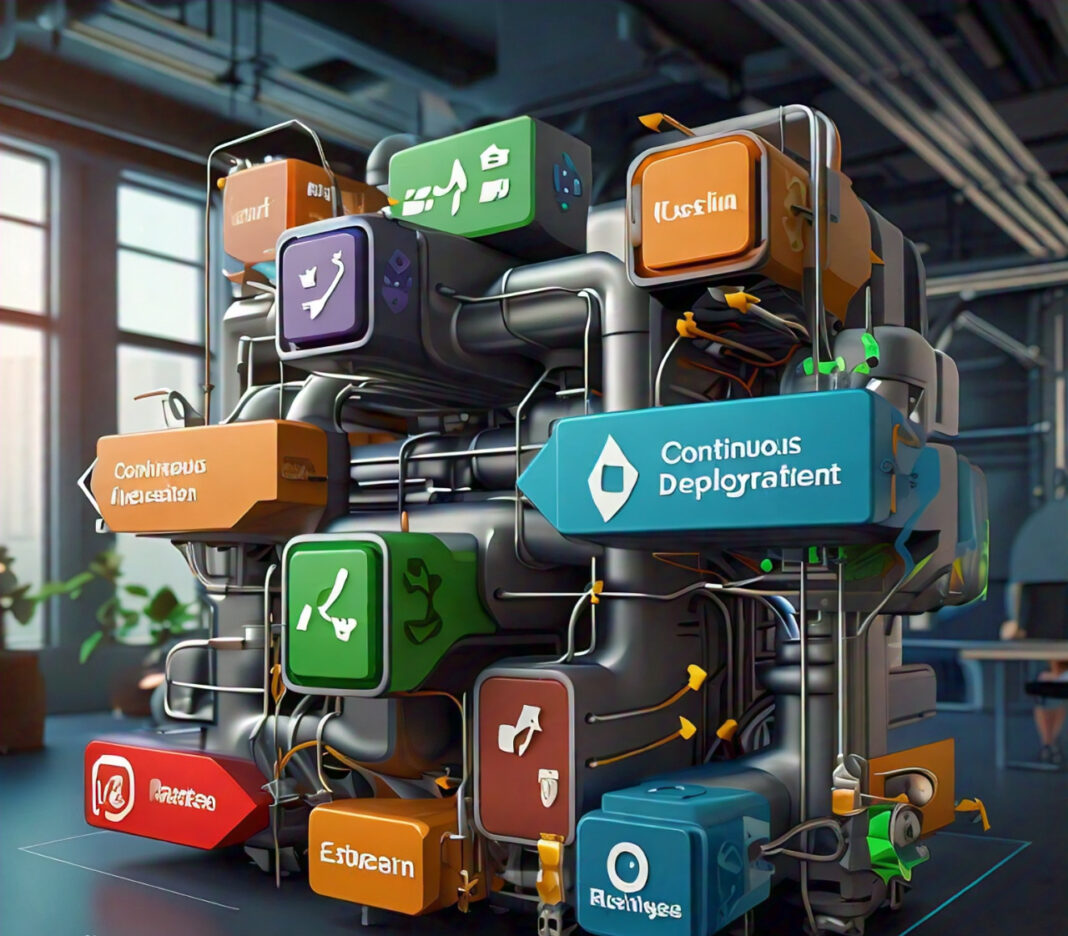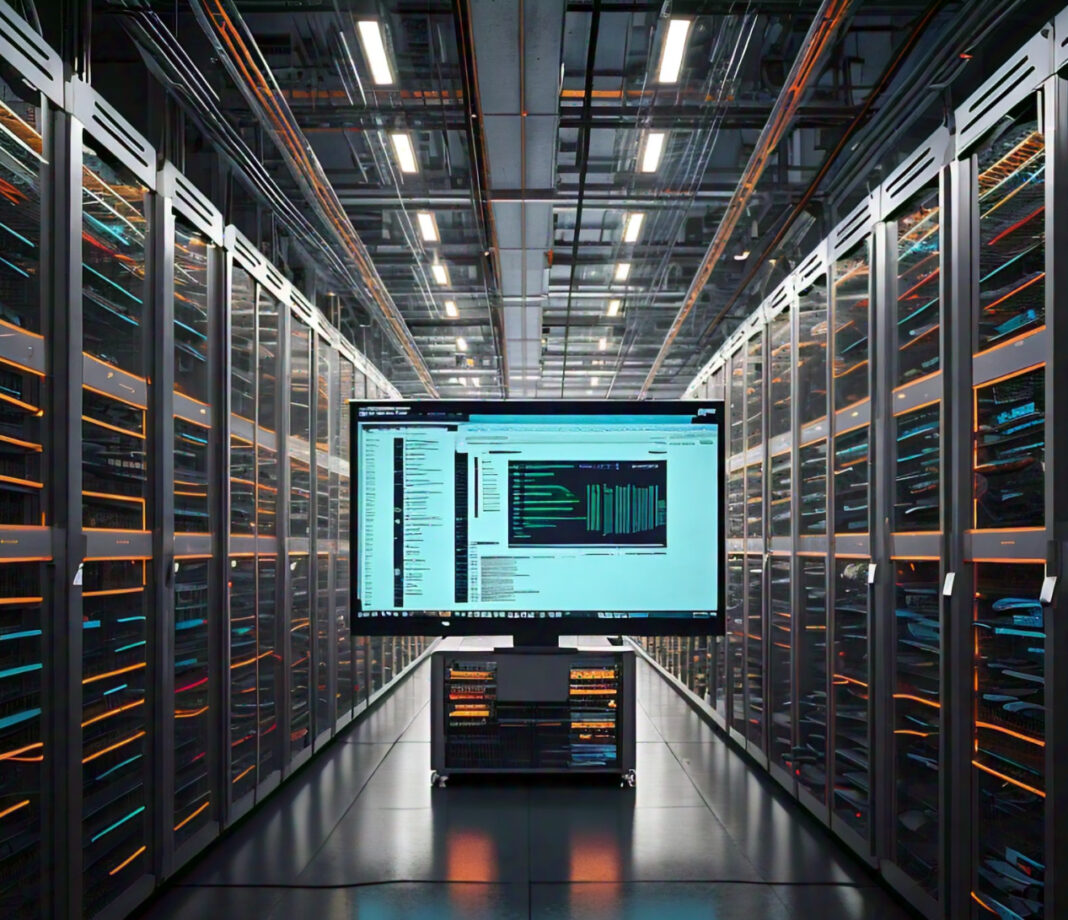The fastness with which software development has been evolving demands high-quality software delivery within the shortest time to ensure competitiveness. Two basic practices, that is, Continuous Integration and Continuous Deployment, assure timely and quality delivery.
It has the effect of not only automating and smoothening software development processes in organizations but also giving them confidence in the release of updates, fixes, and new features.

This article is extensively briefed on the importance, key components, implementation techniques, and resultant benefits that CI/CD strategies bring to modern software development.
What is Continuous Integration?
Continuous Integration is a development practice wherein developers often integrate their changes in code into a common repository several times a day. Each integration is automatically verified by an execution of automated tests in order to find out all the integration problems early. CI offers early bug and error detection in the development process, which helps reduce time and efforts required for fixing them at later stages.
The Goals of Continuous Integration
The prime objectives of Continuous Integration are:
- Early Detection of Issues: Most of the time, CI helps in detecting issues as soon as they arise—by the way, integrating code frequently and running automated tests will reduce the chances of defects creeping into the main codebase.
- Better Collaboration: CI encourages developers to commit code regularly. This furthers collaboration and makes sure that everyone is working with a new version of the codebase.
- Faster Feedback Loop: Automated tests provide immediate feedback on the impact of code changes, enabling a developer to rectify errors and maintain a stable codebase.
- Lessened Integration Issues: CI minimizes confusion in integrating code changes through the integration of small bits of code at regular intervals. This provides very little room for integration conflicts.
Key Practices of Continuous Integration
To effectively implement Continuous Integration, an organization needs to follow some key practices, including but not limited to the following:
1. Regular Commits
Probably the most basic practice of CI is the frequent commitment of changes in the code to the common repository. Ideally, a developer should be committing many times a day. Frequent commits ensure that the changes are small and manageable, and hence the possibility of integration conflicts is reduced.
2. Automated Testing
Automated testing is an integral part of CI. At every commit, a suite of automated tests is run to make sure that the new code does not introduce any errors. They may include unit tests, integration tests, and sometimes even functional tests. Automated testing will ensure that the codebase is stable and has reduced risks associated with introducing bugs.
3. Automated Build Process
Apart from automated testing, another aspect of CI would be automated build processes. This ensures that every time the code is committed, it automatically triggers a build process to compile the code into executable files or deployable artifacts. Automated builds ensure the code is in a state where it’s always buildable and ready for deployment.
4. Continuous Integration Server
A Continuous Integration server, such as Jenkins, Travis CI, or CircleCI, is used to manage the CI process. It oversees the VCS for new changes in code, initiates automated builds and tests, and eventually provides feedback to developers. A CI server acts as the central hub for managing the pipeline of CI.
5. Code Quality and Static Analysis
Besides running tests, most of the CI pipelines include checks for code quality and static analysis tools. They analyze the code against a plethora of probable issues such as code smells, security vulnerabilities, or adherence to coding standards. Thus, code quality checks within the CI process help to keep a clean, maintainable code base.
What is Continuous Deployment?
CD stands for Continuous Deployment, the successive step after Continuous Integration. It means that every change to the code that passes the automated tests is automatically deployed to production. In other words, with continuous deployment, software is always deployable, and new features, updates, or fixes are available to users instantly when ready.
The Goals of Continuous Deployment
This section will cover the key goals of continuous deployment:
- Faster Time to Market: CD can release new features and updates to users in a very short time, reducing the time to deliver value to customers.
- Reduced Manual Intervention: Automation within the process of deployment reduces manual intervention in CD, reducing human error and assuring consistency in deployment.
- Higher Reliability: CD encourages frequent, small releases, which are easier to test and deploy. Hence, this strategy reduces the likelihood that any significant issues will make it to production in the first instance; meanwhile, recovery from issues—if they arise—is prompt.
- Increased Productivity of Developers: The automation of deployment by CD allows developers to work on code while shipping value rather than handling deployments.
Key Practices of Continuous Deployment
Notably, implementing continuous deployment requires several key practices that an organization should espouse, and some are explained herein:
#### 1. Automated Deployment Pipelines
An automated deployment pipeline is one of the chief constituents of CD. Stages within this pipeline are through which code changes must pass before being deployed to production. Examples of these stages include automated testing, generation of builds, environment provisioning, and deployment. Automating the deployment pipeline will guarantee consistency and reliability in an organization regarding the deployment of code changes to production.
2. Feature Toggles
Feature toggles, also referred to as feature flags, are a technique that helps to control the release of new features to a CD environment. By so doing, an organization can deploy changes in code to production without exposing the new features immediately to end-users; hence, facilitating more controlled and gradual rollouts, and minimizing the chances of pushing issues into production.
3. Blue-Green Deployments
Blue-Green Deployment is a strategy wherein two identical production environments are created side by side: first, Blue—with the current release of the application—and another one, Green, containing the new release. Afterward, when a new version is ready to be released, the traffic will be routed from the Blue environment towards the Green one. This strategy allows for zero-downtime deployments and makes it easy to roll back in case issues are detected.
- Canary Releases
Another deployment strategy in CD is Canary Release. In this case, changes are first deployed to a small subset of users. Assuming that no issues have been detected, gradually the deployment covers the remaining users. Canary releases reduce the risk of introducing problems to all users and expedite the detection of potential issues.
5. Monitoring and Alerting
Within CD, monitoring and alerting are two critical enablers. Any code changes deployed to production can result in possible performance degradation, errors, or security vulnerabilities. Therefore, it will be important to monitor the application using tools like Prometheus, Grafana, Datadog, etc., looking at the health of the application in real-time and setting up alerts on certain issues to flag off a response team of developers and operations so that the problem is resolved very fast.
6. Rollback Mechanisms
Even with automated testing and careful deployment strategies, problems still sneak into production. A rollback mechanism provides the capability of quick reversion to a previous version of the application when such problems are detected. Rollback mechanisms can be automated to be part of the deployment pipeline itself, guaranteeing that they execute fast and effectively when needed.
Putting CI/CD Strategies into Practice: Best Practices
As many of the best practices below will show, one needs careful planning to be able to successfully implement these CI/CD strategies.
#### 1. Start Small and Iterate
In implementing CI/CD, it is always important to start small and then iterate. Those parts in the pipeline that are most critical, such as automated builds and testing, can be automated first. Add more stages to a pipeline like automated deployments and monitoring as the process matures. This way, teams can learn incrementally as they go along, and hence reduce the likelihood of putting too much load on them at once.
- Involve the Whole Team
CI/CD involves developers, operations, quality assurance, and even security teams in its efforts. There should be a need to instill a teamwork culture where everybody understands the goals for and benefits of CI/CD. This has to be built through regular meetings and group discussions so that all parties can be coordinated and thus work on their tasks toward common objectives.
3. Automation Tool Investment
Essentially, automation is at the core of CI/CD, hence investing in the right tools for it forms the bedrock of a team’s success. There are multiple tools for CI/CD, each having its strengths and weaknesses. It is important to evaluate and select those that fit your organization’s needs. Popular tools for CI/CD are Jenkins, GitLab CI/CD, CircleCI, Travis CI for CI, Spinnaker, Argo CD, and Octopus Deploy for CD.
4. Test Automation
Automated testing is an integral part of CI/CD, and much time and resources should be invested in writing a good test suite. It must contain unit, integration, and functional tests to ensure the maximum possible coverage of the codebase. The automated tests should be fast, reliable, and easy to maintain. Test-coverage reports will indicate those areas that are not well-tested in the code and that need special attention.
Security and Compliance Checks The CI/CD pipeline must start with security and compliance inbuilt. This comprises running security scans, checking for vulnerabilities, and making sure that the code complies with industrial standards and regulations. This integration of security in the pipeline enables organizations to reduce the potential risks involved in security breaches and ensures that the software developed complies with all regulations.
6. Monitor and Measure Performance
Performance monitoring and measurement are very critical to the CI/CD pipeline; this enables continuous improvement. This can be achieved through key performance indicators relating to build time, test pass rate, deployment frequency, and lead time for changes, among others. By periodically looking at these metrics, teams will be able to make out bottlenecks and areas for improvement in the implementation of their CI/CD pipeline.






